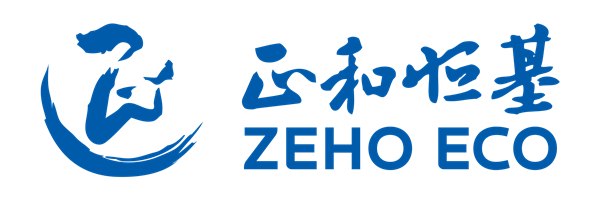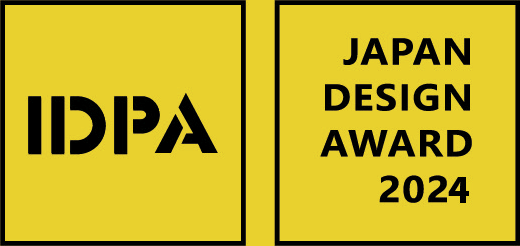- 2023 Silver Prize
- From Landscape Design
Turning Brownfields into an Urban Park: The Ecological Regeneration of South Lake Park in Tangshan
Project Description
Turning Brownfields into an Urban Park: The Ecological
Regeneration of South Lake Park in Tangshan
PROJECT STATEMENT
Once a symbol of environmental devastation, South Lake Park now
stands as a testament to the transformative power of ecological
restoration. Situated 1 km south of Tangshan's city center, this 6.3
square kilometers area was formerly a coal-mining subsidence zone
used as a dumping ground for urban and industrial waste after the
1976 Tangshan earthquake. After years of dedicated restoration
efforts starting in 2008, the South Lake Park has emerged as a
diverse and vibrant central urban park by preserving terrains and
water systems and restoring habitats. Organizing regional
transportation and constructing diverse and energetic hard surface
areas, South Lake Park now offers a variety of facilities for visitors. Today, the South Lake Park is renovated as a haven of natural
beauty where lush mountains and serene waters coexist
harmoniously.
PROJECT STRATEGIES
The challenges were immense, but the vision was clear: transform the
coal-mining subsidence area and restore the ecological balance. The
first hurdle was to plan the park construction while avoiding
geological disasters. The second was to rebuild the damaged
ecological system, tainted by waste and debris since 1976.
The renovation came through three phases of development: the South
Lake Scenic Area, the 2016 World Horticultural Expo, and the South
Lake Park. Drawing on a thorough analysis and deep understanding
of the site's unique characteristics, such as the existing water-land
patterns, coal-mining subsidence impact, and transportation
infrastructure, the design team masterfully integrated engineering
technology with ecological restoration methods. By employing
techniques like fly ash recycling, waste landfill treatment, and
ecologically suitable revetments for subsidence areas, they
successfully rehabilitated the damaged ecosystem, protected
biodiversity, and created accessible, safe, and nature-oriented
spaces for the community to enjoy.
MOUNTAIN RESTORATION
The centerpiece of the project, the 52.5-meter-high Wolong Mountain, covering a total area of 279,500 square meters and with a maximum
slope of 22.7°, was once a heap of industrial waste, including fly
ash from Tangshan City's power plant and construction debris. The
restoration process combined geotechnical engineering technology
with ecological restoration theory. The on-site fly ash waste was
reused as a stacking terrain, mimicking Tangshan's natural mountain
features and saving costs. The waste mound was then covered with
planting soil for shaping and greening. As the artificial mountain had
not experienced a long period of natural settlement with insufficient
social compaction, flood management design became crucial, ensuring the safety and stability of the hill. By thoughtfully managing
the mountain's watershed, the design team calculated the catchment
area and the volume of water it could hold, crafting a plan to
construct horizontal and vertical ditches for the mountain's drainage
system. They then seamlessly integrated ecological grass ditches and
picturesque streams into the landscape to direct rainwater runoff. Drawing inspiration from nature, they designed an imitation mountain
spring waterfall to guide the mountain runoff, effectively ensuring its
safety and stability.
WATERBODY RESTORATION
Based on the subsidence impact assessment, the waterbody
restoration aims to prevent the revetment's cracking, deformation, and
collapse caused by foundation subsidence, deformation, and water
erosion. Ingeniously merging gabion technology with resourcefulness, the design team repurposed abandoned plant materials found on-site
to weave branch beds. These innovative creations safeguarded the
shoreline and stabilized the soil, contributing to the project's overall
success. The "living" revetment expanded the contact area between
vegetation and water, restoring the natural cycle of the water-land
interlaced zone to purify water and provide a richer habitat for
organisms. Currently, more than 20 families and over 40 species of
emergent, floating, and submerged plants thrive in this area, maintaining the integrity of the wetland ecosystem.
HABITAT CREATION
As the largest urban park in the city, South Lake Park caters to the
needs of 3.78 million permanent residents. The design prioritizes the
ease of access for residents by establishing numerous connections
to the municipal transportation network. Thoughtful planning ensures
park entrances and internal pathways are well-distributed and
conveniently situated, promoting a welcoming and accessible
environment for all visitors. Within the park, visitors can explore two
lakeside jogging paths and one mountain jogging path, spanning 9.4
kilometers in total. These winding trails offer a journey through
forests, lakes, wetlands, and squares, presenting a rich tapestry of
diverse and captivating landscapes to admire along the way. The
park features spacious plazas designed to host various public
activities, incorporating eco-friendly permeable materials to minimize
rainwater runoff. By skillfully dividing functional spaces, the park
caters to the needs of both large-scale events and daily leisure
activities, ensuring a safe, welcoming, and comfortable environment
for all to enjoy.
PROJECT OUTCOME
South Lake Park, once a coal-mining subsidence and wasteland, is
now the "green lung" and "oxygen bar" of Tangshan. The project
effectively reduced engineering investment and saved costs through
innovative technology and waste reuse. The park's transformation
improved the living quality of surrounding areas and positively
impacted land values. After the development, the land value of the
105 square kilometers area increased by over 100 billion RMB yuan. The ecology-focused development has effectively increased
employment opportunities and residents' income, driving the
interactive growth of urban sectors such as catering, accommodation, transportation, and entertainment. The social value of ecological
development is increasingly evident, showcasing its positive impact
on the community. The South Lake Park now stands as a shining
example of green transformation for industrial cities. Its success
inspires confidence and offers valuable insights for future post- disaster reconstruction and restoration efforts.
Beijing ZEHO Waterfront Ecological Environment Treatment Co., Ltd. (Stock name: ZEHO ECO, Ticker Symble: 605069.SH), established in
1997. ZEHO ECO has pioneered the sustainable and integrated
approach of ecological environment concept to design, through work
that spans the spectrum from landscape, architecture, energy, waste, water, mobility, urban function to intelligent technology. At ZEHO, it is
our vision to achieve the sustainable development of intelligent ecology, human and nature.

